The Complete Guide to Wild Game Jerky
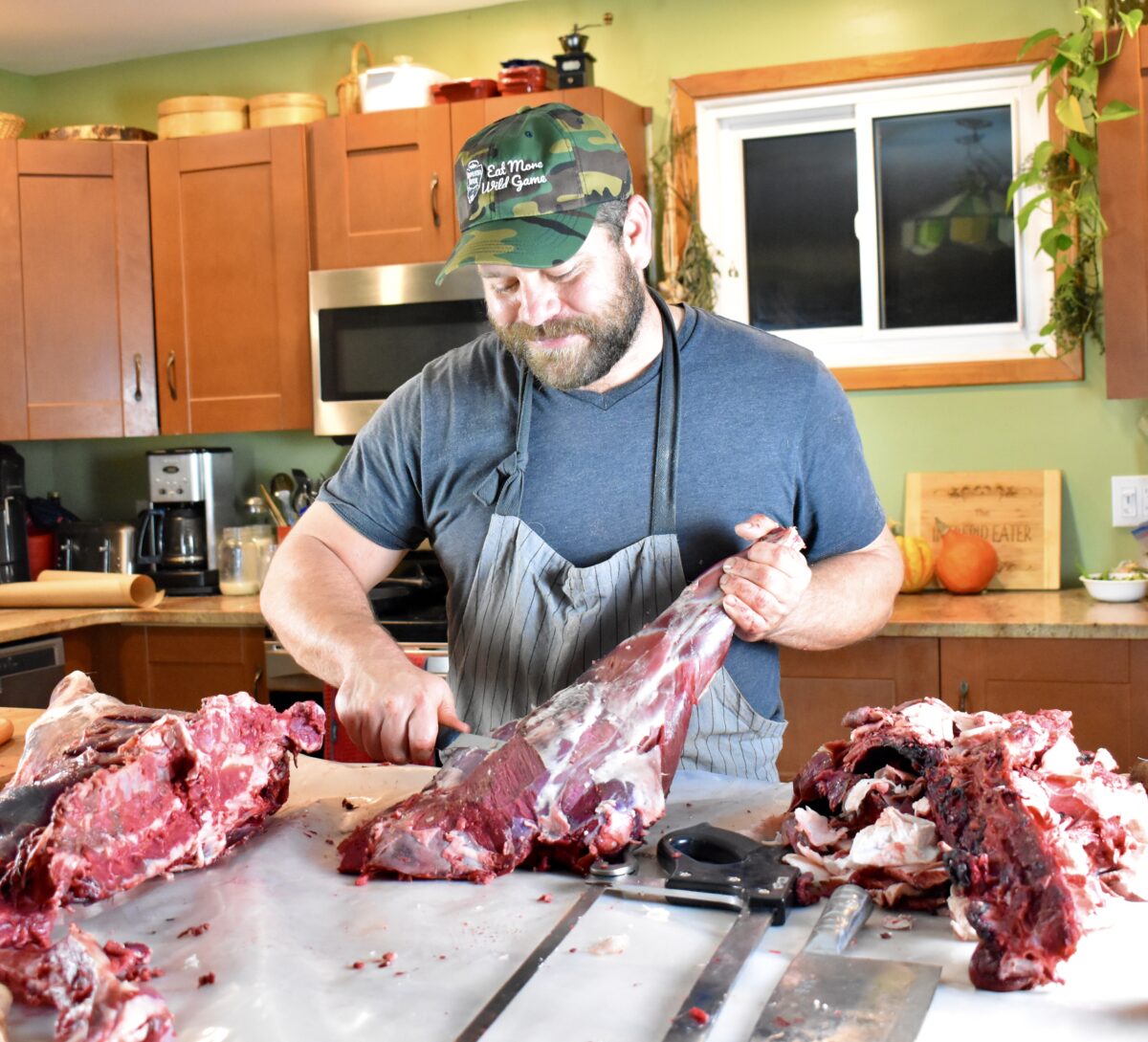
Follow These Steps to Get the Most Out Of Your Homemade Jerky
Text & Photos By Adam Berkelmans
I’m going to show you three ways to make your own jerky so that no matter what kind of setup you have at your place, you can make your own high-quality jerky and leave the stuff at the gas station sitting on the shelves where it belongs.
The History of Jerky
Jerky is a very popular meat snack, made primarily of lean beef, which gets cut into strips, marinated, and dried or smoked over low heat, producing a savory, chewy meat product that is fit to eat without any cooking or preparation. Due to the way it’s made and its protein-to-moisture content, most jerky is shelf-stable and can last unrefrigerated for months. Jerky is largely made by industrial manufacturers, utilizing massive drying ovens, chemical preservatives, and vacuum sealing machines to mass produce the snack for sale, though as I will prove later, it is quite easy to make at home, too.
It seems that jerky didn’t originate in the USA at all, but in what is now modern-day Peru. Incan peoples in the Andes made a dehydrated meat product called “ch’arki,” which means dried, salted meat. The word ch’arki was eventually Anglicized into today’s “jerky,” meaning the name jerky isn’t actually American either. The Incas would take pieces of llama or alpaca meat—often bone-in—salt them, and hang them to dry. The cold mountain air and strong sun worked to create a freeze-drying process that worked along with the salt to dehydrate and preserve the meat. When the Spanish encountered the Incas in the mid-1500s, they encountered ch’arki as well, and quickly adapted the technique to beef as a way to easily feed their men. Ch’arki eventually spread along with the Spanish into Central and North America where other European settlers began making and eating it.
As American colonists pushed westward, jerky became invaluable as a food source in food-scarce regions and (for better or worse), helped fuel colonial progression toward the Rockies. Many exploration parties, and later, groups travelling the Oregon trail, would hire a jerky-making expert who was skilled in hunting and preserving meat.
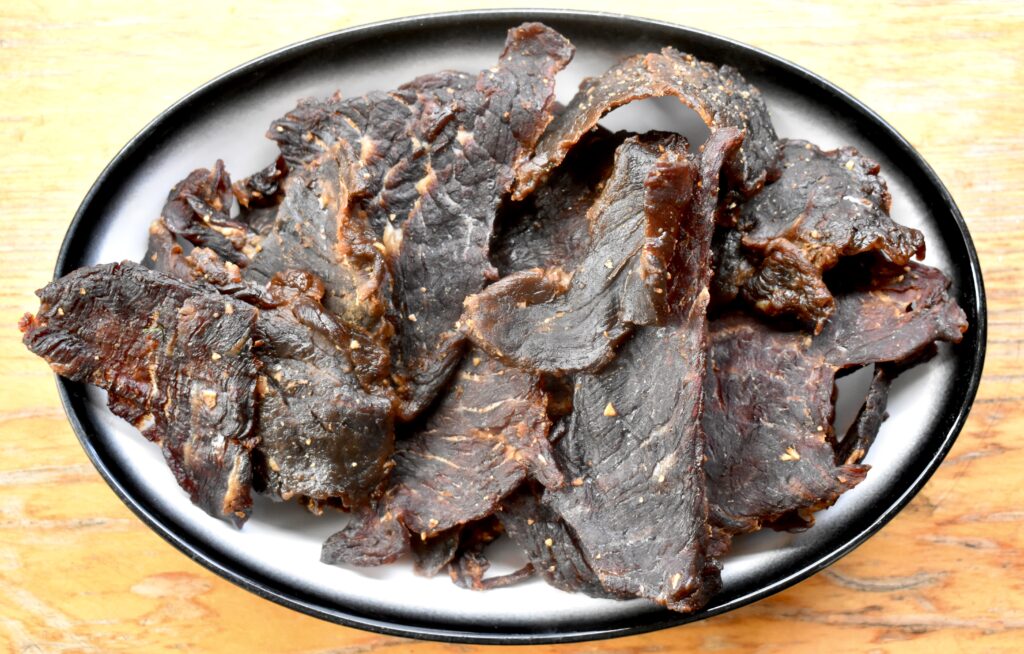
Instead of beef or big game, the jerky would often be made from ducks, geese, and turkeys, which were easier to catch and process on the move. That’s right, turkey jerky is hundreds of years old! As time wore on, American beef became a big deal, with ranches and cowboy culture flourishing from Texas up to Alberta. Beef jerky came along with it, being the perfect food to pack in saddlebags and bring along on cattle drives. As cowboys, soldiers, settlers, Royal Canadian Mounted Police, and trappers chomped on beef jerky, it wove its way into the historical mosaic of the American and Canadian West, and became an indispensable part of the lives and the general story of our history.
Jerky remained popular in North America, eventually being included in soldier’s rations in the World Wars, and afterwards, packaged and sold in stores. As car culture replaced horse culture, jerky could be found in gas stations as it made for an easy-to-eat snack while driving. That brings us to today, where many versions of sub-par, industrially manufactured jerky exists to be purchased.
All You Need to Make Homemade Jerky
- A lean protein
- A marinade
- An oven, smoker, or food dehydrator
The Protein
You’ll want to find a relatively lean protein to make jerky, which is no problem when dealing with wild game meats. Though it can be made with any cut, the hindquarters (sirloin, sirloin tip, inside round, outside round, eye of round) on big game animals work the best due to their lack of connective tissues and fat. Goose, duck, pheasant, grouse, and wild turkey breast also work great, as do the fillets of pink-fleshed fish like salmon or trout and meaty fish like tuna or halibut.
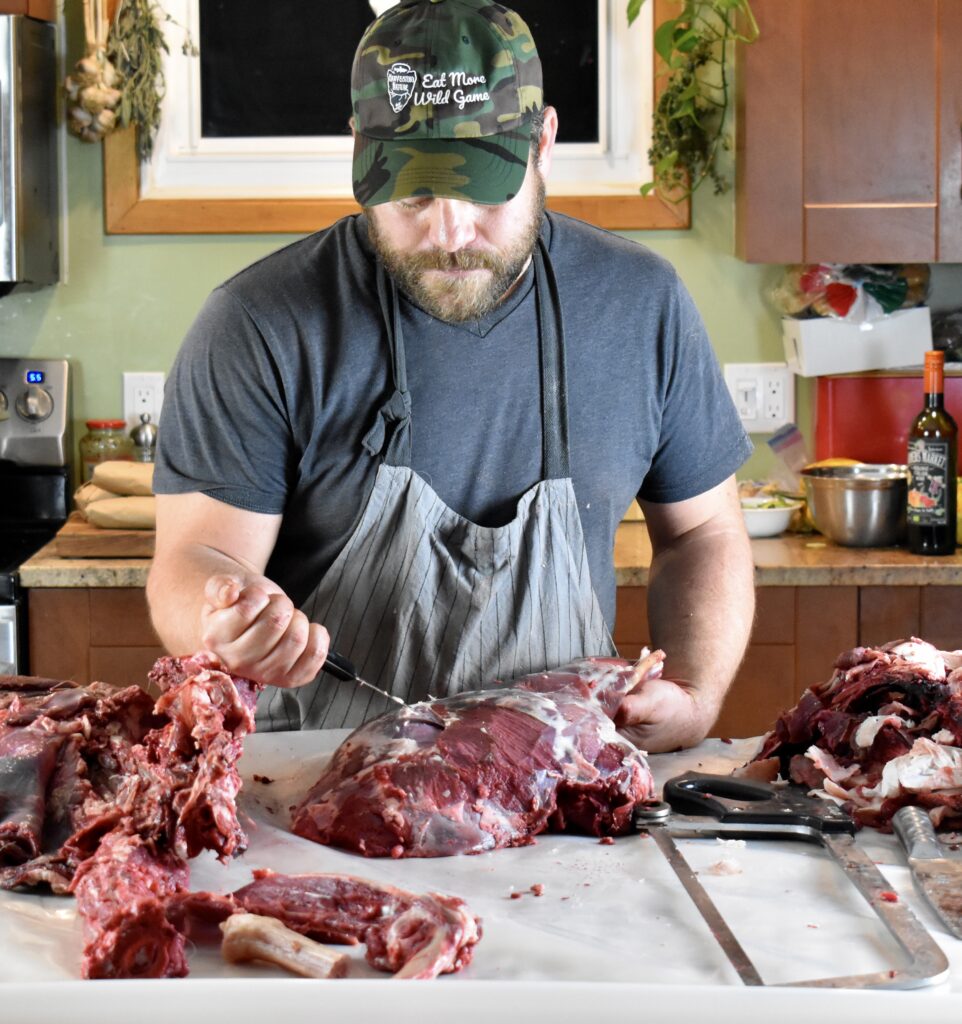
Note of Caution: Since you won’t actually be fully cooking the meat, proteins like wild hog, bear, and chicken aren’t the best candidates. You can however put jerky made from the above in a 300°F oven for 10 minutes after the dehydration process to kill off any potential salmonella or trichinella. Since the USDA only considers wild meat safe past the 160°F cooking temperature, technically all jerky should be finished in the oven. I’ll leave it up to you to decide This may affect the consistency of the finished product.
To prepare your protein, you’re going to want to trim any fat, skin, or connective tissue off the meat. From there, you’ll need to slice the meat into ¼” thick strips. I find it’s easier to do this if you partially freeze the meat beforehand. How you cut your meat will affect the end product, so pay attention to the grain. If you prefer a chewier, stiffer jerky, you’re going to want to slice WITH the grain. If you want softer jerky, you want to slice AGAINST the grain.
The Marinade
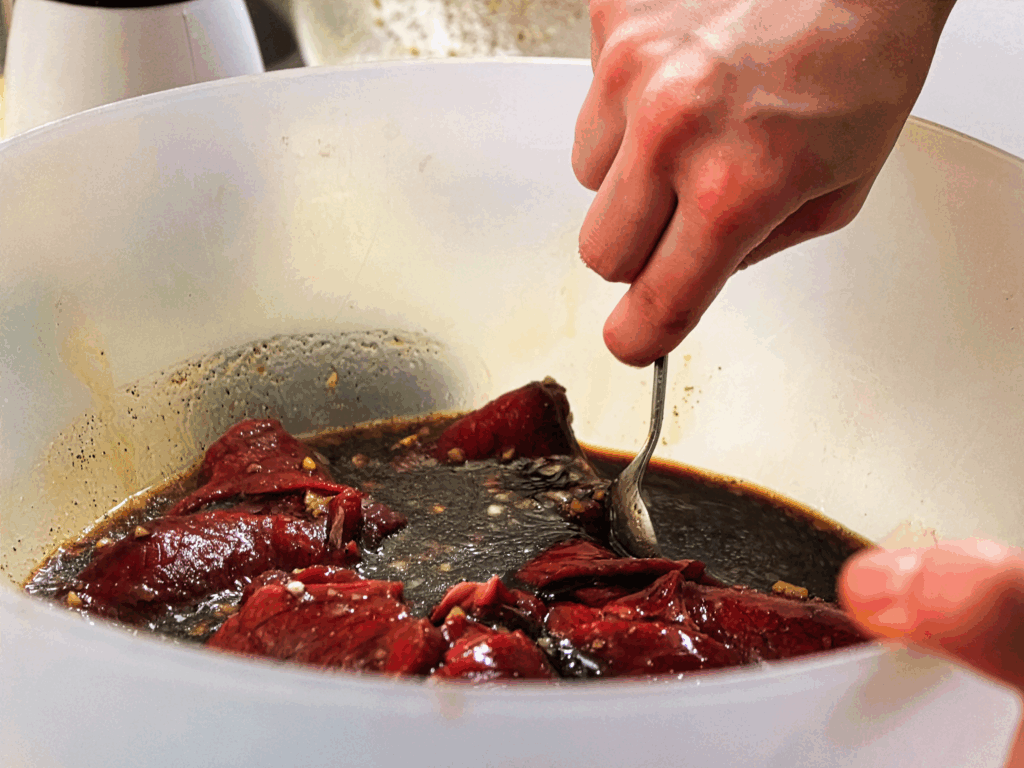
I like to vaguely stick to a ratio for my jerky marinade:
- 4 parts salty
- 2 parts sweet
- 1 part umami
- 1/2 part spicy
- Flavorings
For two pounds of meat, that looks like:
- ½ cup salty (ex. soy sauce)
- ¼ cup sweet (ex. maple syrup)
- 2 tablespoons umami (ex. Worcestershire sauce)
- 1 tablespoon spicy (ex. pepper, Sriracha)
- Flavorings (garlic, liquid smoke)
I sometimes like to use liquid smoke, or something like smoked paprika on my jerky if I’m not making it on the smoker. For two pounds of meat, use about 1 teaspoon of liquid smoke.
I don’t use curing salt for my jerky, mostly because it never lasts long enough to need it. If you do decide to use it, stick with ¼ teaspoon pink curing salt (Prague powder) per 1 pound of meat. It can be dangerous to use any more than this, so use caution when measuring.
Jerky Flavoring
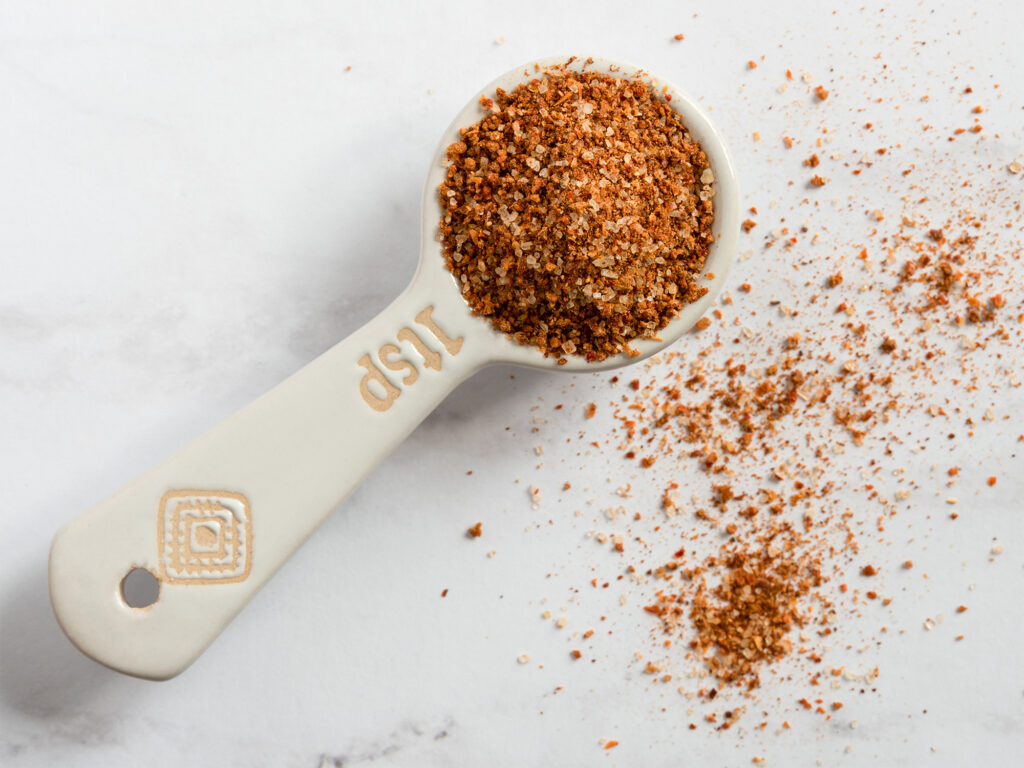
Salty:
Kosher salt
Flavored salt
Soy sauce
Fish sauce
Sweet:
Brown sugar
White sugar
Honey
Maple syrup
Teriyaki
Soda (Coke, Dr. Pepper, etc.)
Fruit juice
Molasses
Spicy:
Chopped chiles
Chili flakes
Hot sauce/Sriracha
Black pepper
Cayenne pepper
Gochujang paste
Jerk sauce
Umami:
Mushroom powder seasoning
Worcestershire
Fish sauce
Marmite
Vegemite
Miso paste
Tomato paste
Other Flavorings:
Liquid smoke
Whiskey
Coffee
Minced garlic
Garlic powder
Smoked paprika
Mustard
Crushed coriander
Spice blends
Sesame oil
Fresh herbs and aromatics
Marinating Jerky
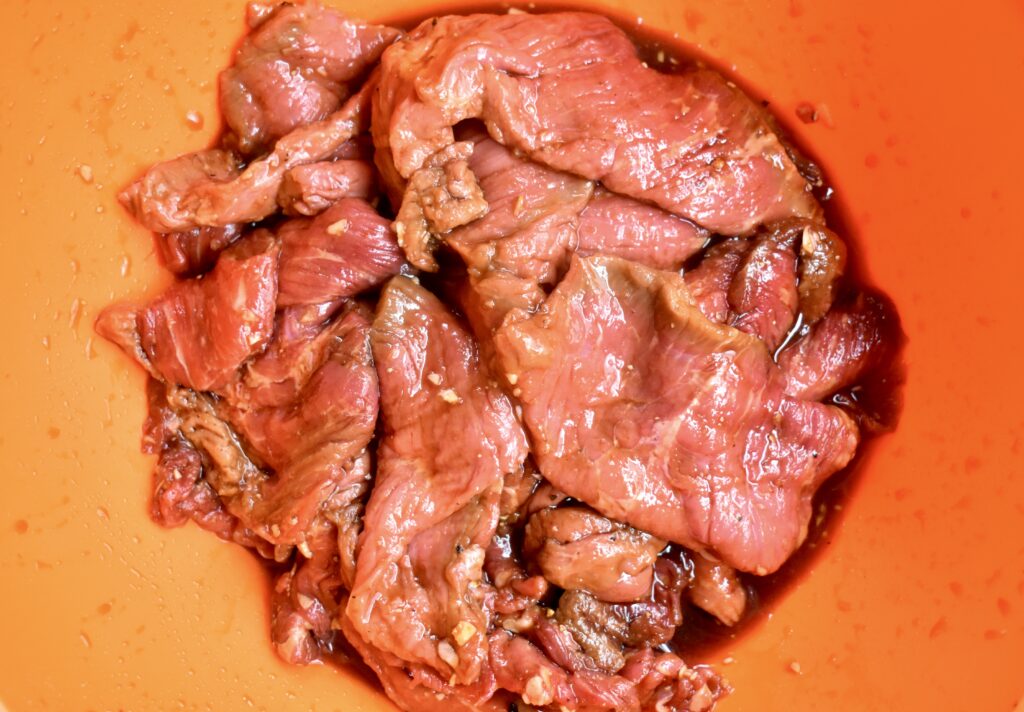
Simply whisk together the marinade ingredients and toss the meat strips in it, using your hands to work the liquid into the meat. Transfer to a sealable plastic bag or covered bowl and keep in the fridge for the allotted time. Any red meat, including waterfowl, will need 10-24 hours of marinating time in the fridge. Poultry like wild turkey will need eight to ten hours. Fish will need about four hours.
Basic Jerky Recipe For Two Pounds of Thinly Sliced Meat
- ½ cup light soy sauce
- ¼ cup maple syrup
- 2 tablespoons Worcestershire sauce
- 1 tablespoon Sriracha hot sauce
- 1 teaspoon liquid smoke
- 1 teaspoon freshly cracked black pepper
- 2 large cloves of garlic, minced
Dehydrating Jerky
You now have to slowly dehydrate your marinated protein in order to turn it into jerky, but don’t worry, you don’t need any fancy equipment to do so. Although you can make jerky in the dehydrator or smoker, all you really need is a regular oven.
Oven Jerky Directions

- Preheat oven to 175°F (or its lowest setting).
- Line two baking sheets with foil.
- Drain the marinade off the meat or fish strips and lay them onto baking racks, making sure no strips touch each other.
- Place each baking rack onto each baking sheet and onto an oven rack.
- Bake for 1½ hours, then swap the baking sheets from one oven rack to the other, turning them 180° and flipping all of the strips of meat while you’re at it.
- Bake for another 1½ hours.
- Remove one piece and let cool before tasting. If you like the consistency, you can stop the dehydration process here. You can continue to dehydrate for three more hours to get the consistency you prefer (from soft and chewy to hard as a rock).
Dehydrator Jerky Directions
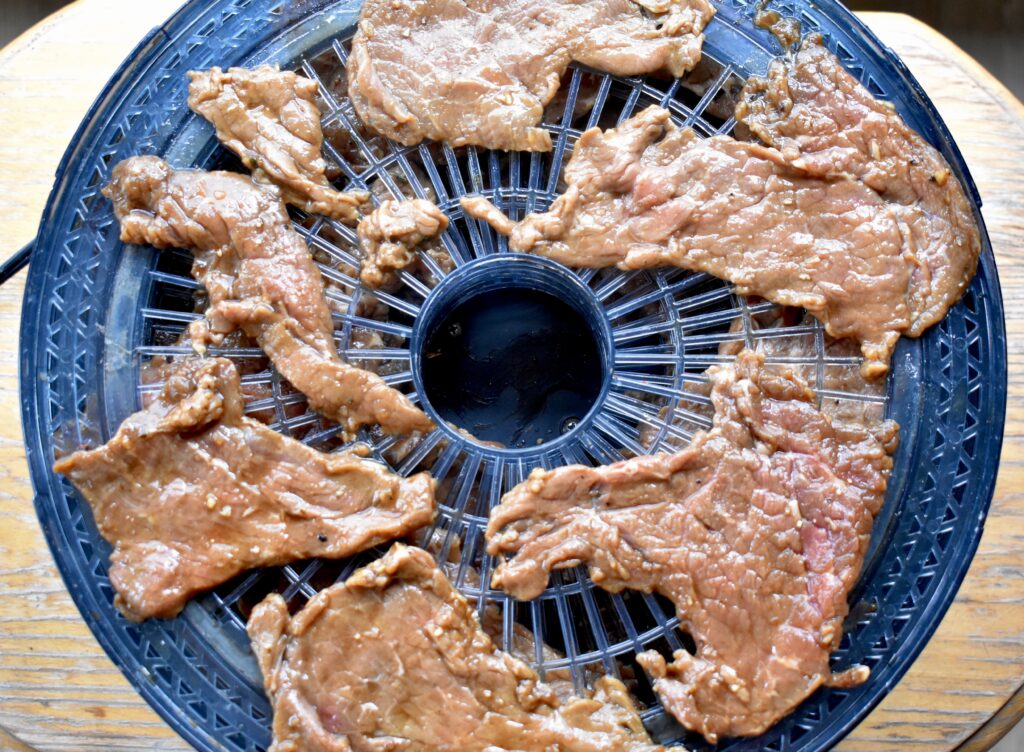
- Lay the marinated meat or fish strips onto the dehydrator sheets or trays, being sure that none of the pieces are touching.
- Set the dehydrator to 165°F.
- Run the machine for three to seven hours depending on what consistency of jerky you enjoy (begin tasting at the three-hour mark).
- At the two-hour mark, rotate the trays from top to bottom and flip the strips of meat.
Smoker Jerky Directions
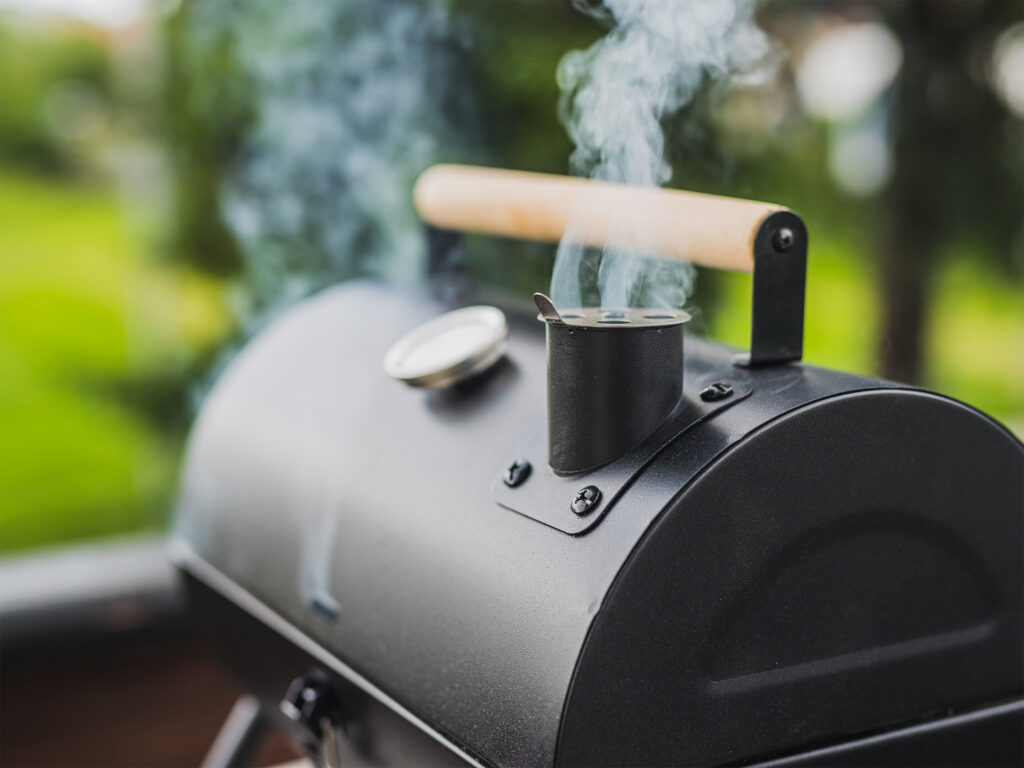
- Omit any liquid smoke from the recipe.
- Set the smoker for 150°F.
- Pat the marinated meat dry with paper towels, then lay onto the grill or tray, being sure the pieces don’t touch each other.
- Smoke for about five hours, or until the jerky bends and cracks, but doesn’t snap in half. There is no need to flip.
Jerky Storage
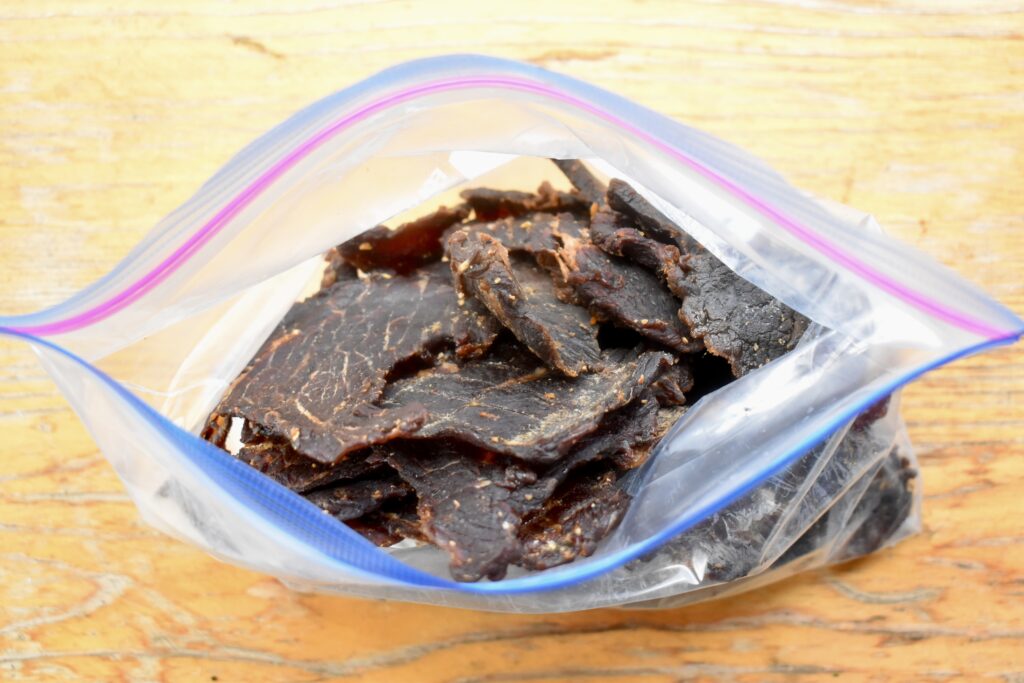
Once your jerky is finished dehydrating, let it cool, then put it in a Ziploc® bag and store in the fridge for a week or so. To keep it longer, vacuum seal and keep it in the freezer for up to three months … I have NEVER had jerky last me for more than a week!
Jerky makes for the perfect hunting snack (for you and your dog!), something to chew on a long drive, or a great treat to bring to the hunt camp—your buddies will love you for it. Stop buying the industrially processed and make your own at home!

